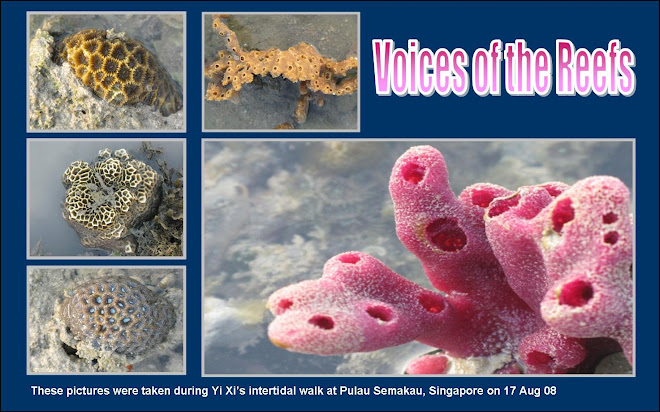Coral reefs are being degraded by an accumulation of stresses arising from human activities and examples of these activities include:
Over-Fishing - There is an increasing demand for food fish and tourism curios, which resulted in over-fishing of not only deep-sea commercial fishes, but key reef species as well! The over-fishing of certain species near coral reefs can affect the ecological balance and biodiversity of the reefs. From subsistence level fishing to the live fish trade, inadequate fisheries management is forcing the decline of fish stocks.
Pollution - Pollution causes the damaging of reefs worldwide. The disposing of litter or unwanted items on beaches, in the sea or near storm drains can damage coral reefs when transported by rivers into coastal waters.
Corals are also affected by climate changes.
 Coral Bleaching - This occurs when symbiosis between corals and their symbiotic zooxanthellae breaks down, resulting in the loss of the symbionts and a rapid whitening of the coral host (thus the term "bleaching"). This is actually a stress response by the coral that can be caused by various factors. But the more severe and frequent cases are caused by the rising of the sea surface temperature (SSTs).If the temperature decreases, there is a chance that the corals can recover; but if it persists, the whole colony could be wiped out.
Coral Bleaching - This occurs when symbiosis between corals and their symbiotic zooxanthellae breaks down, resulting in the loss of the symbionts and a rapid whitening of the coral host (thus the term "bleaching"). This is actually a stress response by the coral that can be caused by various factors. But the more severe and frequent cases are caused by the rising of the sea surface temperature (SSTs).If the temperature decreases, there is a chance that the corals can recover; but if it persists, the whole colony could be wiped out.
The impacts from coral bleaching are becoming global in scale. They are also increasing in frequency and intensity. Mass coral bleaching generally happens when temperatures around coral reefs exceed 1o C above an area's historical norm for four or more weeks. Sea surface temperature increases have been strongly associated with El Niño weather patterns. However, light intensity, (during doldrums, i.e. flat calm conditions), also plays a critical role in triggering the bleaching response. If temperatures climb to more than 2o C for similar or longer periods, coral mortalities following bleaching will increase.
 Other causes such as coral disease can also cause the deterioration of coral species. Most diseases occur in response to the onset of bacteria, fungi, and viruses. However, natural events and human-caused activities may exacerbate reef-forming corals' susceptibility to waterborne pathogens.
Other causes such as coral disease can also cause the deterioration of coral species. Most diseases occur in response to the onset of bacteria, fungi, and viruses. However, natural events and human-caused activities may exacerbate reef-forming corals' susceptibility to waterborne pathogens.

The Crown of Thorns Starfish(COTs) is a voracious coral reef predator. Populations of the COTs have increased since the 1970s and large outbreaks of starfish can occur wiping out huge tracks of coral reef. Few animals in the sea are willing to attack the spiny and toxic crown-of-thorns starfish, but some shrimp, worms and species of reef fish do feed on larvae or small adults. The decline of these predators, through over-harvesting and pollution, is one factor contributing to the rise in the population of the starfish.

 A coral reef is composed of a calcereous exo-skeleton secreted by billions of tiny animals called polyps. Millions of polyps grow on top of the limestone remains of former colonies to create the massive reefs. It takes years for some corals to grow even one centimetre! They range in size from a pinhead to a few feet in length. Amazingly, these tiny animals form the only natural structure visible from space.
A coral reef is composed of a calcereous exo-skeleton secreted by billions of tiny animals called polyps. Millions of polyps grow on top of the limestone remains of former colonies to create the massive reefs. It takes years for some corals to grow even one centimetre! They range in size from a pinhead to a few feet in length. Amazingly, these tiny animals form the only natural structure visible from space.





 We picked up a lot of litter from the beach.
We picked up a lot of litter from the beach.











 Look at the amount of rubbish we collected!
Look at the amount of rubbish we collected!






 Look at all the hard and soft corals spotted! Are they fabulous? Would you have imagined that they can be found along Singapore's shorelines?
Look at all the hard and soft corals spotted! Are they fabulous? Would you have imagined that they can be found along Singapore's shorelines?






 We also saw a cushion star (Culcita novaeguineae). They feed on corals.
We also saw a cushion star (Culcita novaeguineae). They feed on corals.

















